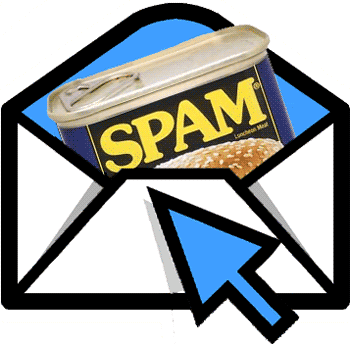 Spam is anonymous, unsolicited bulk email – it is effectively the email equivalent of physical junk mail delivered through the post. It is sent out in mass quantities by spammers who make money from the small percentage of recipients that actually respond. Spam is also used for phishing and to spread malicious code.
Spam is anonymous, unsolicited bulk email – it is effectively the email equivalent of physical junk mail delivered through the post. It is sent out in mass quantities by spammers who make money from the small percentage of recipients that actually respond. Spam is also used for phishing and to spread malicious code.Over the last decade, the use of and delivery of spam has evolved. While spam was initially sent directly to computer users and easily blocked, in the coming years, high-speed Internet connections allowed spammers to send out mass mailings inexpensively and quickly, as did the discovery that individual users' modems could be accessed by anyone from anywhere in the world since they had no protection at all. In other words, unsuspecting internet users' connections could be used to send their spam in much higher volume.
That was until hardware manufacturers began securing their equipment, and filters became more proficient at blocking spam. Yet, spammer techniques have always evolved, not only in the way they send spam, but also in response to filters. The result is an ongoing battle between spammers and those working to prevent them, constantly trying to stay one step ahead in the fight to keep spam from clogging the information superhighway.
How can I protect myself from spam
Maintain at least two email addresses. Use your private address only for personal correspondence, and another address for registering on public forums, in chat rooms, to subscribe to mailing lists etc.
Your private address should be difficult to guess. Spammers use combinations of obvious names, words and numbers to build lists of possible addresses. Your private address should not simply be your first and last name. Be creative and personalize your email address.
Treat your public address as a temporary one. The chances are high that spammers will get hold of your public address fairly quickly if it is frequently being used on the internet. Don't be afraid to change it often.
Never respond to spam. Most spammers verify receipt and log responses. The more you respond, the more spam you will receive.
Do not click on 'unsubscribe' links in emails from questionable sources. Spammers send fake unsubscribe letters in an attempt to collect active email addresses. If you click 'unsubscribe' in one of these letters, it will simply increase the amount of spam you receive.
Never publish your private address on publicly accessible resources.
If you must publish your private address electronically, mask it to avoid having it picked up by spammers. ‘Joe.Smith@yahoo.com’ is easy to find, as is ‘J.Smith@yahoo.com.’ Try writing ‘Joe-dot-Smith-at-yahoo.com’ instead. If you need to publish your private address on a website, do this as a graphics file rather than as a link.
Consider using a number of public addresses in order to trace which services are selling your address to spammers.
Make sure that you use the latest version of your web browser and that any security patches have been applied.
Use an anti-spam solution and only open email accounts with providers who provide spam filtering.
If your private address is discovered by spammers - change it. This can be inconvenient, but changing your email address does help you avoid spam - at least for a while!
No comments:
Post a Comment